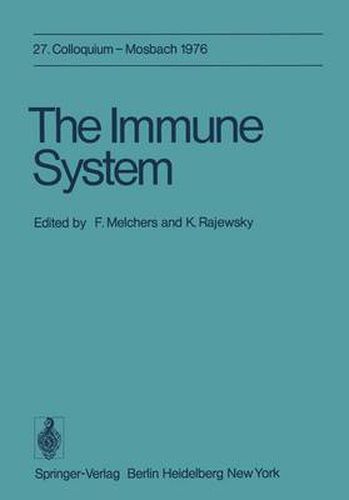Readings Newsletter
Become a Readings Member to make your shopping experience even easier.
Sign in or sign up for free!
You’re not far away from qualifying for FREE standard shipping within Australia
You’ve qualified for FREE standard shipping within Australia
The cart is loading…






This title is printed to order. This book may have been self-published. If so, we cannot guarantee the quality of the content. In the main most books will have gone through the editing process however some may not. We therefore suggest that you be aware of this before ordering this book. If in doubt check either the author or publisher’s details as we are unable to accept any returns unless they are faulty. Please contact us if you have any questions.
The cells of the immune system generate a large variety of binding sites which differ in their binding specificities and can therefore react specifically with a large variety of ligands. These binding sites are part of receptor molecules, enabling the system to react to the universe of antigens. The classical antigen receptor is the antibody molecule, and accord ingly the first session of this colloquium deals with a classical sub ject, namely antibody structure. Dramatic recent advances in this field make it possible to interrelate primary and three-dimensional struc ture both to each other and to function, i.e. the binding of antigen and possible reactions occurring in the antibody molecule upon antigen binding. The latter point is of particular interest since it may be relevant not only for effector functions of antibodies such as the binding of complement, but also for the triggering of a lymphocyte through its antibody receptor for antigen.
$9.00 standard shipping within Australia
FREE standard shipping within Australia for orders over $100.00
Express & International shipping calculated at checkout
This title is printed to order. This book may have been self-published. If so, we cannot guarantee the quality of the content. In the main most books will have gone through the editing process however some may not. We therefore suggest that you be aware of this before ordering this book. If in doubt check either the author or publisher’s details as we are unable to accept any returns unless they are faulty. Please contact us if you have any questions.
The cells of the immune system generate a large variety of binding sites which differ in their binding specificities and can therefore react specifically with a large variety of ligands. These binding sites are part of receptor molecules, enabling the system to react to the universe of antigens. The classical antigen receptor is the antibody molecule, and accord ingly the first session of this colloquium deals with a classical sub ject, namely antibody structure. Dramatic recent advances in this field make it possible to interrelate primary and three-dimensional struc ture both to each other and to function, i.e. the binding of antigen and possible reactions occurring in the antibody molecule upon antigen binding. The latter point is of particular interest since it may be relevant not only for effector functions of antibodies such as the binding of complement, but also for the triggering of a lymphocyte through its antibody receptor for antigen.